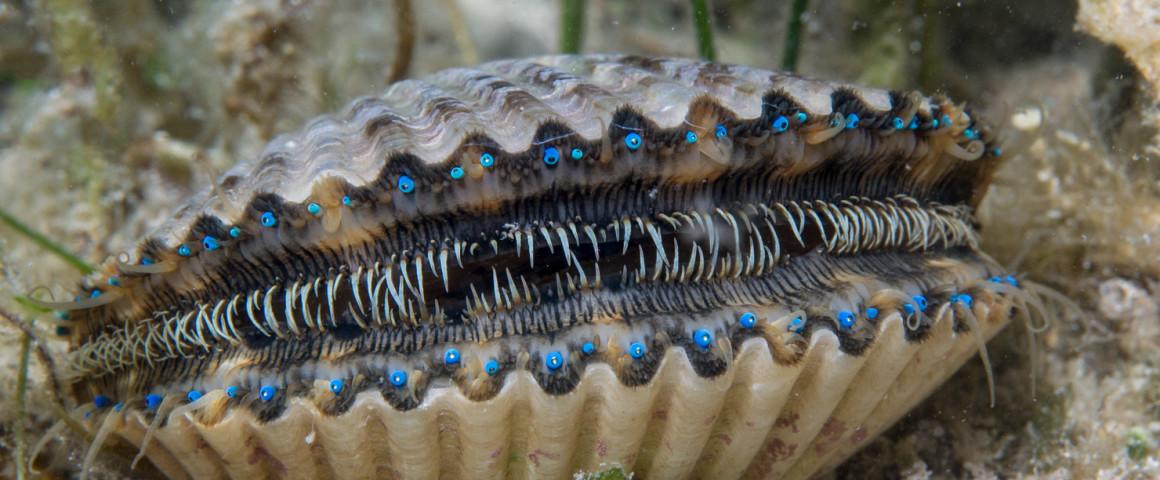 |
| They swim by taking water into their shells and then expelling it rapidly |

But the real shocker about scallops is that they can see!!!! What?!?!?!?!?!? And...... they have roughly 200 eyes each. Each eye is located on the end of a tentacle that can extend out of the shell. All the eyes are found on the mantle, the fleshy part inside the rim of the shell. Although each eye is the size of a poppy seed, they contain a lens, two retinas, and a mirror.
 |
| Each blue dot is an eye |
One of the newest breakthroughs has been to analyze the mirror used in scallop eyes. Human eyes only use a lens and retina so why use a mirror? Lenses are only good for focusing a very limited type of light while mirrors can reflect many more types, allowing the scallop to interpret more of its surroundings. The mirror is made up of guanine, one of the DNA bases. Molecules of guanine are assembled into tiny, flat squares that are arranged like tiles into a flat bottomed bowl structure. The mirror is about 30 layers thick with fluid between the layers. This structure allows the light to be redirected back to where it came from. Because of the structure these eyes are very good at interpreting blue light, the predominant light in the marine environment.
 |
| A close-up of scallop eyes |
The mirror technology that has been discovered in scallops could help......... space technology!! Telescopes are being designed with the same mirror idea to help scientists see into deep space. Isn't this cool? And to think these majestic beasts were in our own backyard this whole time!
No comments:
Post a Comment